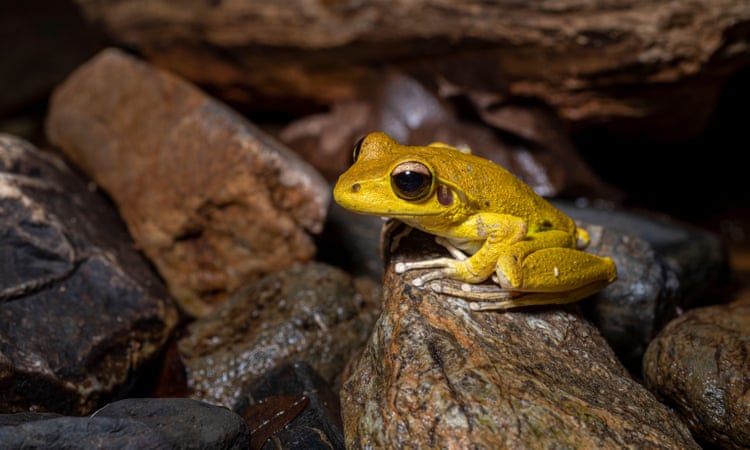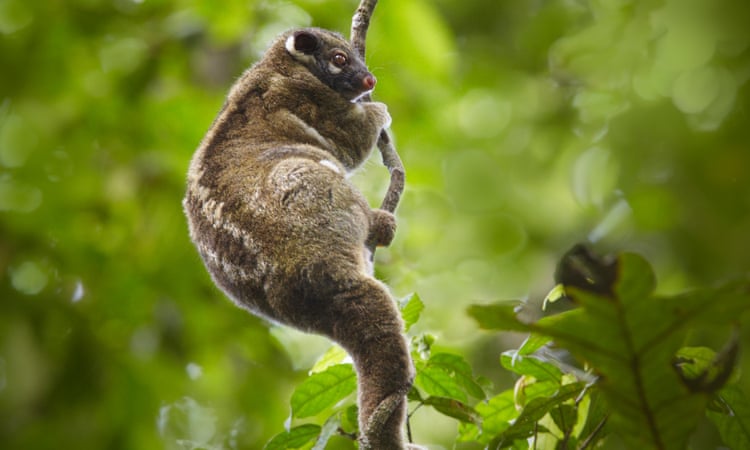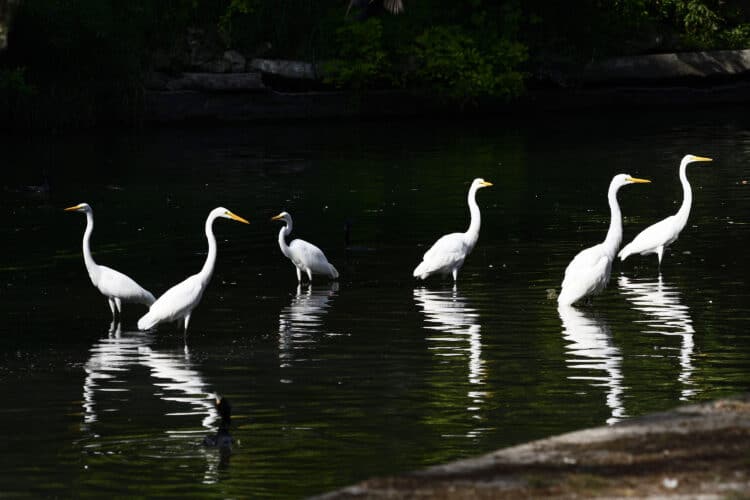Consecutive wet years have boosted breeding colonies of waterbirds in eastern Australia but not enough yet to increase total bird numbers, according to the latest edition of one of the world’s largest and longest nature surveys.
Researchers on the annual survey, now in its 39th year, flew 38,360km – or almost enough to circumnavigate the globe – to track the abundance in more than 2,000 wetlands of about 50 bird species, from Queensland down to Victoria.
Even though parts of inland Queensland registered record rains and many rivers have lately been in flood, rainfall has been patchy, with areas such as north-western Victoria still relatively dry. Years of severe drought as well as large-scale water diversions for irrigation have also taken their toll.
“The sort of core resource of birds that can breed when there’s a good flood is declining, so their capacity to bounce back is getting less and less,” said Richard Kingsford, director of the University of NSW’s Centre for Ecosystem Science, who took part in his 36th consecutive survey.
The monitoring counted 95,306 birds, a drop from 2020 and the third lowest tally in the almost four decades of tracking. The researchers, though, did observe increases in breeding of birds such as the Australian white ibis and straw-necked ibis.
With more water around, it is also likely that birds range beyond the surveyed bands. Large flows are also making their way towards the Lake Eyre basin in central Australia, and more breeding will be triggered by that water, Kingsford said.
Waterbirds are important barometers of river health, with the abundance of various species indicating the availability of vegetation, invertebrates and fish. “[They] provide you with a story about what’s going on in the rivers,” he said.
When water flows into wetland systems, it improves water quality for human communities downstream but also supports native fish, frogs and river red gums “that all depend on these sort of floods coming down the system”, Kingsford said.

A NSW upper house review report released on Wednesday warned that a decade of reforms under the $13bn Murray-Darling Basin Plan could be undermined if the government proceeded with plans to licence more harvesting of water on flood plains.
Kingsford said water diversions for cotton, nuts and other crops had interrupted flows and made it harder to trigger natural bird breeding events. The Tallywalka wetlands in central NSW, for instance, remained dry when surveyed in October even though big rivers in the region were already high.

The survey provided some good news, showing the return of more magpie geese. Numbers were smashed by poisoning for rabbits in the past, and the loss of habitat.
The internationally important Macquarie Marshes also had moderate levels of water augmented by environmental flows supplied by the NSW and federal government. This water is supporting considerable numbers and diversity of waterbirds.
However, the researchers counted just 57 Australasian shovelers, compared with thousands in the early years of the survey.
Similarly, they observed just 105 freckled ducks, compared with more than 10,000 in previous good years. Researchers also counted 6,528 pink-eared ducks versus a dozen previous years when numbers were closer to 50,000, the report said.
“One of the real advantages with having these long-term datasets that are collected in the same way every year and have been for some time, is you do [track] natural floods and droughts ,” Kingsford said. “You can start to tease out what the human impact is on these river systems.”
This article by Peter Hannam was first published by The Guardian on 16 December 2021. Lead Image: The UNSW Eastern Australian Waterbird Survey tracked about 50 bird species from Queensland down to Victoria. Photograph: Richard Kingsford.
What you can do
Support ‘Fighting for Wildlife’ by donating as little as $1 – It only takes a minute. Thank you.
Fighting for Wildlife supports approved wildlife conservation organizations, which spend at least 80 percent of the money they raise on actual fieldwork, rather than administration and fundraising. When making a donation you can designate for which type of initiative it should be used – wildlife, oceans, forests or climate.







Leave a Reply